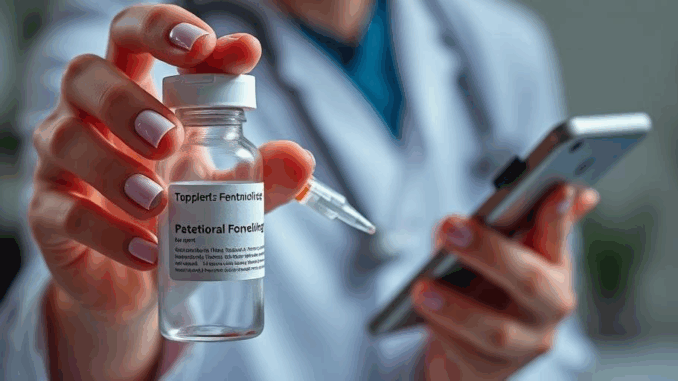
Summary
This article examines the evolving opioid crisis in the U.S., focusing on the shift in affected populations and the rise of fentanyl. It explores various recovery programs, including medication-assisted treatment (MAT), counseling, and support groups, emphasizing the importance of a holistic approach. The article also highlights the challenges of access to care, particularly in rural areas, and discusses innovative solutions like telemedicine.
** Main Story**
Okay, so, the opioid crisis. Still a huge problem, right? It’s not just fading away; it’s actually morphing, throwing us new curveballs all the time. It’s forcing us to really rethink our approach. I mean, how many times have we heard, ‘It’s a new day, gotta adapt’? Well, this is it. Let’s dive into what’s changing and what we can do about it.
From Pills to Powder: A Shifting Landscape
Remember when the crisis was mainly about prescription painkillers? Yeah, those days feel almost quaint now, don’t they? Initially it was largely affecting white populations; but that’s changed, and not for the better. Sadly what we’re seeing now, is Black communities being disproportionately hit, especially with the rise of fentanyl. Between 2013 and 2016, the availability of synthetic opioids like fentanyl really skyrocketed in these areas, and you can guess what followed. Overdoses went through the roof. It’s not just a change; it’s a red flag screaming for targeted action, and it’s a harsh reminder that this crisis doesn’t play favorites. It exploits vulnerabilities. Fentanyl, that incredibly potent and cheap synthetic opioid, has become the puppet master behind a lot of this destruction. It’s often mixed into heroin or pressed into counterfeit pills, and people don’t even know what they are taking. The results? Catastrophic.
Recovery: A 360-Degree Approach
But it’s not all doom and gloom; there’s hope in recovery. It isn’t easy but we can make a real difference in peoples lives. And I think the programs out there are really amazing. Medication-assisted treatment (MAT) is a big one. Think methadone, buprenorphine, naltrexone, combined with counseling and therapy. It’s a comprehensive strategy. Because, let’s be honest, dealing with withdrawal and cravings is brutal. MAT really helps to take the edge off, increasing the chances of long-term recovery.
The Power of the Mind and the Group
And then there’s counseling, which, honestly, can’t be overstated. Behavioral therapies like cognitive-behavioral therapy (CBT) are crucial. They get to the why behind the addiction. What are the triggers? How do you cope? It’s all about equipping people with the tools they need to stay on the right path, and yes, the process can take time.
Beyond individual therapy, support groups like Narcotics Anonymous (NA) and SMART Recovery offer something irreplaceable: community. Just knowing you’re not alone, that others understand what you’re going through, can be a lifeline. And peer support programs? Golden. People who’ve been there, done that, offering mentorship and encouragement. I even recall reading about the Salvation Army’s Adult Rehabilitation Centers which offer 180-day residential work-therapy programs, providing spiritual, social, and emotional assistance. It’s a real holistic approach, a real game changer.
Barriers to Care: The Rural Reality
Okay, so, we’ve got solutions but are these solutions available to everyone? The answer is a firm ‘no,’ especially in rural communities. These areas often struggle with shortages of healthcare professionals and treatment centers, seriously limiting access to MAT and other crucial services. What do we do?
Telemedicine is stepping up, becoming a vital tool. Video conferencing allows patients to connect with doctors, getting them remote prescriptions for MAT and medication management. I remember reading about a program in West Virginia – the Comprehensive Opioid Addiction Treatment program – which showcases just how well telemedicine works. Treatment retention and abstinence rates were comparable to in-person care! Makes you wonder, why aren’t we using it more?
Policy and Partnerships
And policies matter, too. The Comprehensive Addiction and Recovery Act and the SUPPORT for Patients and Communities Act were designed to increase the accessibility of MAT and break down those stubborn barriers to care. It’s about framing addiction as a public health crisis, not a criminal one. Huge difference. Plus, some states are getting creative – mobile MAT units, partnerships with community organizations to reach underserved populations. It’s all about going where the need is, not waiting for people to come to you.
Looking Ahead: A Multi-Pronged Attack
The opioid crisis is complex, multifaceted, and ever-evolving. That means the response needs to be equally agile. We’ve got to tackle the unique challenges different communities face, make sure effective treatment is within reach for everyone, and keep embracing those innovative solutions. If we do that, we can actually stem the tide of this epidemic. It’s not going to be easy, no one said it would be; however, it’s possible. Ongoing research, data collection, and strong collaboration between healthcare providers, policymakers, and community groups are absolutely essential if we want to develop and implement strategies that truly support recovery and, ultimately, save lives. Now, that’s something worth fighting for.


Be the first to comment